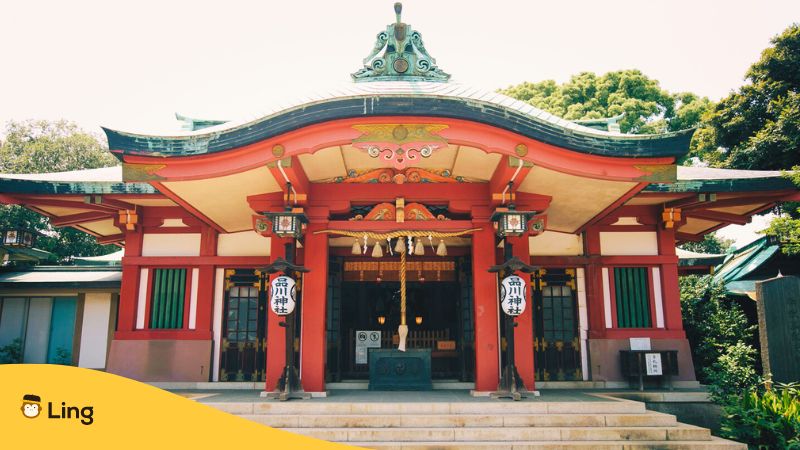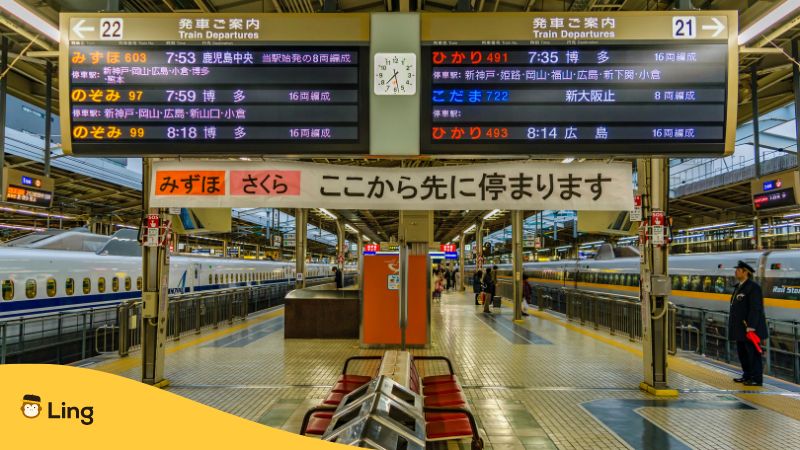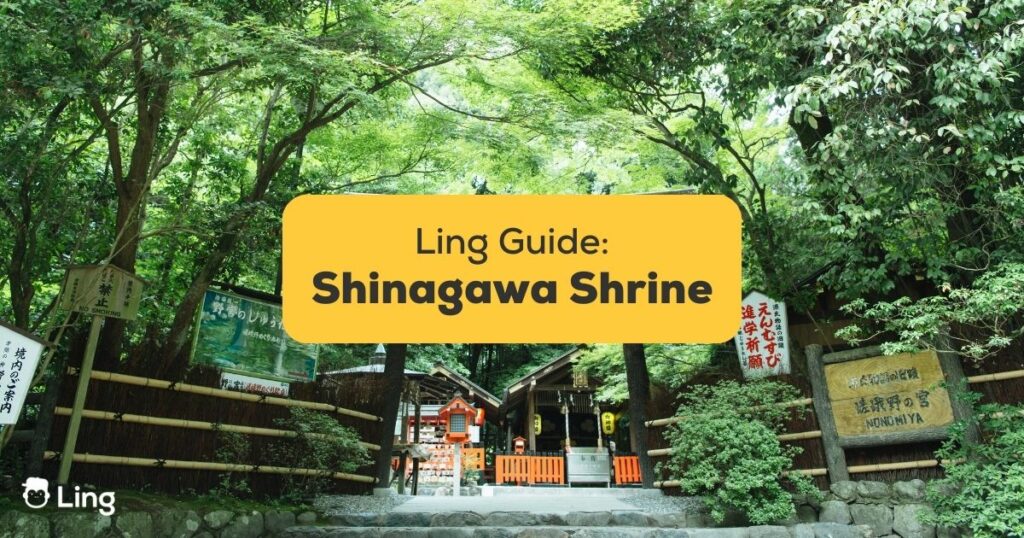I know the guidebooks and blogs always push the same old temples and shrines – Senso-ji this, Meiji Jingu that. And while those spots deserve the hype, you wanna hear about an underrated gem, right? One with serious spiritual history still going strong today? Then lend me your ears, because Shinagawa Shrine should be your next divine pitstop when discovering Tokyo!
Nestled in an unlikely spot surrounded by towering skyscrapers, this tranquil haven has safeguarded traveling wayfarers crossing into Edo and the modern city for centuries. I’m talking beautiful Shinto architecture, blessing rituals to kickstart journeys, and a rock garden with mythological lore – the whole shebang!
Better still, outside the occasional local festival, you can bask in the serenity without battling tourist swarms. That means ample breathing room to wander the bridges looping over coy fish ponds or admire the avant-garde glass votives glittering like crystalline flames. Trust me, this secret sanctuary lets you tap into quintessential Japanese religion and culture without the crowds.
In this post, I’ll fill you in on the enshrined deities, area history, sights to see, and all that jazz to fully appreciate this divine site as the perfect spiritual pitstop. Plus, I’ll let you in on some Japanese words that can help you navigate this wonderful spot.
So skip that next hectic Shibuya crosswalk photo-op, and let’s catch our breath at Shinagawa Shrine instead!
Table of Contents
Shinagawa Shrine In Tokyo
So what’s the deal with this historic spot anyway? Shinagawa-jinja Shrine traces its roots all the way back to the 1100s. Yup, it sounds crazy, but samurai warlord Yoritomo Minamoto himself commanded the shrine’s construction here to keep vessels sailing in safely and for some extra divine luck. Talk about clout!
Through the centuries, it mainly served as a guardian to the nearby Tōkai-ji (東海寺), fusing spiritual support between the Buddhist monks and native Shinto beliefs. They went by “Kitashinagawa Inari” back then, named after the fox kami they worshipped. Then after the temple peaced out later on, Shinagawa Shrine kept protecting the neighborhood all on its own.
Oh and get this – the locals believe there are actually three main Shinto deities holding court at Shinagawa these days that each bring their own divine vibes. Menohirinome-no-Mikoto rolls heavy with helping adventurous travelers, guiding voyagers by sea and land. Then you’ve got Ukanomitama-no-Mikoto providing awesome protection ridding bad vibes. Last but not least, storm god Susanoo-no-Mikoto oversees keeping nature’s fury at bay so visitors face smooth sailing.

Key Features Of The Shinagawa Shrine
The Soaring Soryu Torii Gate
Rising 19 meters tall and spanning 14 meters wide, the giant vermillion torii gate greeting visitors at Shinagawa’s entrance makes an imposing first impression. As the largest of its kind in Tokyo, the structure’s grand size matches the ancient site’s rich history.
Known as a soryu style gate, its name translates to “Blue Dragon” and represents the divine beasts guarding spiritual realms in Japanese myth. The four main pillars symbolize the legendary dragon god’s giant limbs upholding the gate.
Beyond just looking incredibly photogenic framed against the city skyline, the gate serves important functions. Marking the official shrine entrance, towering over visitors reminds them to leave worldly thoughts behind and revere the divine spirits within.
The Mystical Fujizuka
One of the most unique sites within the sprawling Shinagawa Shrine grounds has to be the curious grass-covered mound called Fujizuka. Surrounded by sacred stones and trees, this miniature landscape actually represents Mount Fuji in microcosm form.
According to local legends, the mound dates back centuries to when Konohanasakuya-hime, the symbolic goddess of Mount Fuji, traveled far from her home. As a gift to the people of Shinagawa for their devoted worship, she took a small part of Mount Takao to the west and transformed it into Fujizuka.
The new landscape emanated divine properties and blessings of its full-sized namesake. People soon recognized Fujizuka as a sacred, miniature embodiment of iconic Mount Fuji right in Shinagawa’s backyard.
The Ana Inari Shrine
Now one of Shinagawa’s cutest claims to fame has to be the petite Ana Inari Shrine tucked behind the main complex. Dedicated to Inari, the fox messenger deity bringing good harvests and prosperity, this pint-sized sanctuary packs charming details everywhere.
Rows of small red torii gates line paths by an elevated hut-like honden structure for the resident spirit. Little fox statues peer out playfully, representing Inari’s role in blessing worldly success for merchants, agriculture, and inventors alike.
Shinagawa Shukuba Matsuri
Every September, Shinagawa’s proud hospitality heritage as Tokyo’s first Tokaido Road stopping point comes alive at the lively Shinagawa Shukuba Matsuri. Held annually on the last weekend of the month, this vibrant cultural festival transports visitors back to the bustling way station days.
Centered around the preserved remnants of Shinagawa-juku, one of the key inn complexes that catered to medieval highway travelers, the matsuri celebrates the post-town’s rich history. You’ll witness volunteers elegantly dressed as Edo-period vendors, samurai, and Oiran courtesans between the dancing, music, and craft booths.
While the dynamic, costumed atmosphere introduced at this heritage celebration is captivating in its own right, one must not forget the enduring Shinagawa Shrine remains the most integral local icon at the very heart of the Shinagawa Shukuba Matsuri festivities.
Historically, this deeply revered spiritual site coexisted alongside the area’s traveler services, lending both kami worship and blessings for the weary Tokaido crossers arriving. Today, the beloved shrine serves as the radiant matsuri focal point before visitors immerse themselves in the way the station experiences.
How To Get To Shinagawa Shrine
Traveling to this historical religious site in the modern metropolis couldn’t be easier thanks to public transportation access. Shinagawa Shrine sits just moments from two stations on the convenient Keikyu Main metro line.
The nearest stop is Shimbamba Station, just 186 meters (or a 3-minute walk) northwest of the shrine grounds. Exist the station and head up Rokuchome street, following small signs guiding the short stroll to the towering Soryu entrance gate.
Keikyu’s Kita-Shinagawa Station sits less than 500 meters south of the shrine as well. Coming from destinations across Tokyo, take the Asakusa subway line and transfer to Sengakuji to quickly reach Kita-Shinagawa. Then walk north for 7 minutes up Baraki-cho street to arrive at the sacred site.
With helpful navigation apps or maps pinpointing the shrine’s address at 3 Chome-7-15 Kitashinagawa in Shinagawa City ward, getting to this crossroads heritage hub couldn’t be much simpler. So grab a metro pass and come immerse yourself in the fascinating history of Tokyo’s spiritual foundations!
Opening Hours Of The Shinagawa Shrine
Taking in the tranquil atmosphere and exploring the rich cultural structures and gardens at Shinagawa Shrine makes for an engaging Tokyo experience away from the busy districts. Conveniently, the shrine complex remains open to visitors for generous hours without charging admission fees.
Opening hours are from 9:00 AM to 5:00 PM daily, allowing ample early morning or early evening opportunities to avoid crowds. Do note the shrine office itself with staff closes earlier in the afternoon if need guidance.

Useful Japanese Words When Visiting Shinagawa Shrine
Visiting a Shinto shrine like Shinagawa’s offers the perfect opportunity to embrace authentic culture and practice handy Japanese vocabulary too! Here are common phrases to help interact smoothly during your spiritual explorations:
御朱印をお願いします – Goshuin o onegai shimasu
When purchasing goshuin (go-shuu-in) (御朱印) shrine seals or amulets at the office counter, politely request using this phrase adding “kudasai” at the end.
ありがとうございます – Arigatou gozaimasu
The standard thank you phrase after receiving items or guidance from monks. Go-to for showing etiquette!
拝礼 – Hai-rei
On bowing twice before haiden (hi-den) (拝殿) hall altars or statues, utter these terms of reverence.
お守り – Omamori
Remember this word for protective amulets sold in shrines to carry after praying.
神 – Kami
Handy one meaning Shinto “spirits” or “deities” like those Shinagawa enshrines.
Ready To Visit The Shinagawa Ward?
I hope this extensive guide provides plenty of insight for travelers seeking to explore beyond Tokyo’s well-beaten tourist sites! Spiritual gems like the World Heritage site Sensoji Temple are undoubtedly impressive. Yet hidden corners like ancient Shinagawa Shrine give more intimate connections into enduring soul of local heritage.
If visiting renews your interest in diving deeper into Japan’s intricate relationship with tradition, consider building practical language skills with the user-friendly Ling app! Convenient audio lessons teach cultural concepts on the go, from temple terminology to perfecting polite phrases for interactions.
Unlock a whole new layer of appreciation for each trip by being able to directly discuss meaning with locals!



































































